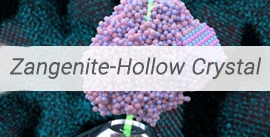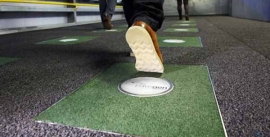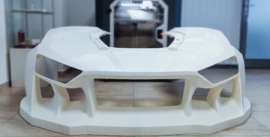 جدید
جدیدذخیره اطلاعات روی یک تک اتم – The World’s Smallest Hard Drive
فناوری ذخیرهسازی دادهها روز به روز در حال کوچکتر شدن است، اما گاه و بیگاه این روند جهشی خیره کننده به مرحله بعدی دارد، درحدی که اکنون ذخیرهسازی دادهها روی یک تک اتم میسر شده است.
محققان آی بی ام توانستهاند با مغناطیسی کردن اتم، سرد کردن آن در هلیوم مایع و ذخیرهسازی آن در شرایط خلاء یک بیت داده، یک صفر و یک را درون اتم ذخیره سازند. به گفته دانشمندان آیبیام این رویکرد جدید شاید از گنجایش خیره کنندهای برخوردار نباشد، اما میتواند به تدریج به کاهش ابعاد ابزار ذخیرهسازی شود،برای مثال میتوان با این تکنیک کل آرشیو آیتونز یا اسپاتیفای، حجمی برابر ۳۰ میلیون آهنگ را روی یک کارت اعتباری ذخیره کرد.
محققان در این آزمایش از تکنیک برنده نوبل میکروسکوپی-تونلی-روبشی یا STM استفاده کردند، تکنیکی که از پدیده تونلزنی در ماشینهای کوانتومی بهره میبرد، پدیدهای که در آن الکترونها به درون موانعی رانده میشوند تا بتوان الکترونیک را در مقیاس اتمی مورد مطالعه قرار داد. دانشمندان باوجود شرایط خلاء شدید درون STM توانستند با موفقیت یک اتم هلیوم را دستکاری کنند. این میکروسکوپ همچنین از سیستم سردکنندگی هلیومی برخوردار است که در افزودن ثبات به فرایند خوانش و نوشتار مغناطیسی کمک میکند.
به لطف محیط کاملا کنترل شده، محققان توانستند با دقتی بالا دو اتم باردار مغناطیسی را در فاصله یک نانومتر از یکدیگر ثبت کرده و بازخوانی کنند. با کمک گرفتن از میکروسکوپ دانشمندان توانستند جریان برقی را به اتمها وارد کنند که باعث تغییر جهت میدان مغناطیسی آنها می شد تا عملکردی مانند یک هارد درایو عادی پیدا کند، البته در مقیاسی بسیار کوچکتر.
هارددرایوهای مدرن برای ذخیره یک بیت داده از ۱۰۰ هزار اتم استفاده میکنند و از همین نقطه میتوان به تفاوت بزرگ میان تکنیک جدید و شیوه های رایج ذخیرهسازی پی برد. محققان معتقدند با استفاده از این تکنیک میتوان درایوهایی ۱۰۰۰ برابر متراکمتر از هارد درایوهای کنونی را تولید کرد. اگرچه پیش از این نیز تلاشهایی در راستای ذخیرهسازی داده روی تک اتم صورت گرفتهبود، اما نتیجه این آزمایش بادوامترین و کوچکترین مقیاس ممکن را در پی داشته است. جزئیات بیشتر این پژوهش در نشریۀ nature منتشر شده است.
منبع : www.sciencealert.com
IBM Seriously Just Turned an Atom Into The World’s Smallest Hard Drive
By magnetising an atom, cooling it with liquid helium, and storing it in an extreme vacuum, the team managed to store a single bit of data (either a 1 or a 0) in this incredibly miniscule space. Not enough room for your holiday photos then, but according to the team from IBM Research in California, this proof-of-concept approach could eventually lead to drives the size of a credit card that could hold the entire iTunes or Spotify libraries, at about 30 million songs each.
The team deployed its Nobel Prize-winning Scanning Tunneling Microscope (STM) for the experiment, which uses the ‘tunnelling phenomenon’ in quantum mechanics, where electrons can be pushed through barriers, to study electronics at the atomic scale. With the extreme vacuum conditions inside the STM, free from air molecules and other types of contamination, scientists were able to successfully manipulate a holmium atom. The microscope also applies liquid helium cooling, which is important in adding stability to the magnetic reading and writing process.
Thanks to that carefully controlled environment, the team could accurately read and write two magnetically charged atoms just a single nanometre apart – that’s one millionth the width of a pinhead. With the help of the microscope, the scientists could deliver an electric current that turns the magnetic orientation of a single atom up or down, mimicking the operation of a normal hard drive, but on a much smaller scale.
Today’s hard drives use about 100,000 atoms to store a single bit, so you can get an idea of the difference we’re talking about. The team says the technique could produce drives that are 1,000 times denser than the ones we have right now. And while the process is going to remain much too difficult and expensive to use commercially for some time, the researchers have shown that it can be done, which is an exciting first step.
“The high magnetic stability combined with electrical reading and writing shows that single-atom magnetic memory is indeed possible,” the researchers conclude. The study has been published in Nature.









دیدگاه کاربران